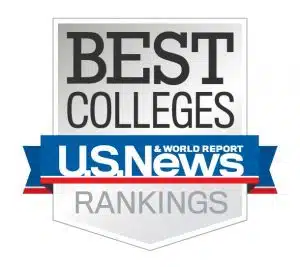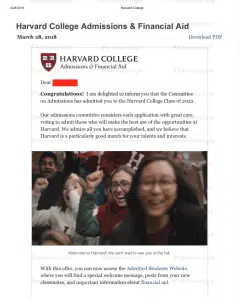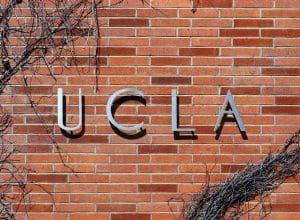Imagine this: you’re calculating your cumulative GPA (Grade Point Average) and slowly realizing that it’s not going above a 3.0—so you can’t get into an Ivy League school now. One of your options would be to search for colleges that accept low GPAs.
A low GPA won’t automatically disqualify you from higher education since many colleges recognize that academic performance alone doesn’t define a student’s potential. Holistic admissions policies are very common nowadays, with colleges considering different factors, such as essays, extracurriculars, and test scores.
Below, we’ll give you a list of 10 colleges with low GPA requirements, some tips to improve your GPA, and how to get into college despite ending up with a low GPA.
- The Importance of GPA
- 10 Easiest Colleges to Get Into With Low GPA
- Tips to Improve Your GPA
- How to Get Into College With a Low GPA
- Frequently Asked Questions
- Takeaways
The Importance of GPA
GPA is important since it reflects your academic performance and ability to handle coursework. This also shows your preparedness for college-level coursework.
A lower GPA can negatively affect your college applications by signaling to admissions officers potential challenges with meeting the academic rigor of their institution. It can make it harder for you to stand out among a pool of highly qualified applicants with higher GPAs.
A too-low GPA can also limit your scholarship opportunities since some of them have minimum GPA requirements. For instance, the University of Texas at Austin requires its undergrads to have a minimum GPA of 2.00 to receive financial aid.
Fortunately, there are colleges that accept low GPAs. These institutions recognize that not everyone does great academically, so they look at an applicant as a whole by asking for letters of recommendation and personal essays, among other things.
Minimum GPA vs average GPA
It’s also important to remember that there is a difference between minimum GPA requirements and the average GPA of admitted students.
Minimum GPA requirements are the absolute lowest GPAs a college will consider. Meeting the minimum GPA doesn’t guarantee admission, but falling below it usually disqualifies an application.
Meanwhile, the average GPA of admitted students represents the average GPA of the students who were actually accepted. It provides a more realistic picture of the institution’s academic competitiveness.
10 Easiest Colleges to Get into with Low GPA
There are actually a number of colleges you can get into with a GPA as low as 2.5. However, we’ve only listed six options (in no particular order) you can consider.
1. Franklin Pierce University (Rindge, New Hampshire)
Minimum GPA: 2.5
Acceptance rate: 93%
Franklin Pierce University is one college that accepts low GPAs. It offers both on-campus and online programs, whether for certificates, bachelor’s degrees, and master’s. The school has programs for the arts like Digital Media Design to health professions like Emergency Medical Services.
The Rindge campus is its main one, located just a few minutes from the Massachusetts border. It has beautiful surroundings, being found between Mount Monadnock and Pearly Pond.
2. New England College (Henniker, New Hampshire)
Minimum GPA: 2.85
Acceptance rate: 96%
New England College offers both on-campus and online bachelor’s programs and completely online associate’s programs. The school emphasizes experiential learning with opportunities such as cooperative programs, service learning, and study abroad programs.
There are also many ways to get involved on campus—from organizations like The New Englander student newspaper to more adventurous experiences like rock climbing and skiing!
3. American International College (Springfield, Massachusetts)
Minimum GPA: 2.91
Acceptance rate: 89%
American International College was originally founded to educate immigrants who were arriving in America from New York. This openness to racial/ethnic diversity can still be seen today, with only 34% of the students being White.
The school has the Noonan Tutoring Center, where you can get tips on studying, time management, and test-taking. You can even get free tutoring. It also offers advising for undergraduate and international students. There is also a student support services program for first-generation college students.
4. Methodist College (Peoria, Illinois)
Minimum GPA: 2.5
Acceptance rate: 33%
Another college that accepts low GPAs is the Methodist College. This school specializes in healthcare education and has become one of the largest nursing and health science colleges in Downstate Illinois.
It is affiliated with Carle Health, a company with a system that aims to make healthcare accessible to everyone by connecting patients to the doctors and services they need. This affiliation gives you clinical opportunities at the different Carle Health hospitals and clinics.
5. Norfolk State University (Norfolk, Virginia)
Minimum GPA: 2.3
Acceptance rate: 89%
Norfolk State University has historically been a Black university, and an overwhelming number of its enrolled students in 2024 are still Black. The university has several cultural and history months to celebrate diversity—including Hispanic/Latinx Heritage Month, Native American Heritage Month, Black/African American History Month, and Asian/Pacific American Heritage Month, among others.
Norfolk also has the Safe Space Training Program to teach participants about allyship and ways everyone can make the campus safe and inclusive for LGBTQ+. There’s even a Spartan Food Pantry Program where you can get free groceries and supplies from the school pantry.
6. State University of New York at Buffalo (Buffalo, New York)
Minimum GPA: 2.5
Acceptance rate: 68%
The State University of New York (SUNY) at Buffalo is the biggest institution in the SUNY system. The school has at least 80 undergraduate programs and many chances to learn outside of typical classes—such as study-away programs, experiential learning opportunities (like undergraduate research and conferences), and learning communities.
You can get involved and connect with other students through volunteer opportunities and at least 100 clubs the university offers.
7. Virginia State University (Petersburg, Virginia)
Minimum GPA: 2.5
Acceptance rate: 90%
Virginia State University is an HBCU (historically black colleges and universities). It is a land-grant university that was actually the first fully state-supported four-year institution of higher learning for Black Americans in the US.
The school has 37 undergraduate programs, and its land-grant mission especially pushes it to be at the forefront of agricultural research by offering a B.S. Agriculture major. Virginia State University keeps track of its yearly achievements. For instance, in 2024, its College of Engineering and Technology was approved to offer a BS in Mechanical Engineering
8. Alabama State University (Montgomery, Alabama)
Minimum GPA: 2.7
Acceptance rate: 96%
Alabama State University is a public HBCU and is also one of the nation’s oldest institutions of higher education for Black Americans. Located in Montgomery, the birthplace of the modern civil rights movement, its students can learn and thrive in a city that’s rich in history and culture.
Alabama State University offers the Federal TRIO Program, which aims to provide services to students with disadvantaged backgrounds. For instance, first-generation college students can attend resume-writing workshops and career fairs where some graduating seniors can be hired on the spot.
9. Kentucky State University (Frankfort, Kentucky)
Minimum GPA: 2.0
Acceptance rate: 93%
Kentucky State University used to be a small school for training African American teachers. Nowadays, it offers associate, baccalaureate, and master’s degrees in different disciplines.
The university’s strongest college is the College of Agriculture, Health, and Natural Resources, which works closely with the Kentucky State University Land Grant Program. The Land Grant Program aims to use state-of-the-art, research-based educational programs to improve the quality of life of underserved communities.
10. National Louis University (Chicago, Illinois)
Minimum GPA: 2.0
Acceptance rate: 93%
National Louis University used to be a college to train women to be kindergarten teachers. Nowadays, it has expanded its undergraduate programs, offering them both on-campus and online. However, the school is still recognized as the nation’s leading college of education.
Some of the university’s unique programs include Health Care Leadership, Early Childhood Education, Infant-Toddler Studies, and Maternal Child Health.
Tips to Improve Your GPA
If you still have enough time, you should definitely try to get your GPA up! Doing so can make you stand out more from the pool of applicants, even if you’re already trying for colleges that accept low GPAs. On top of that, a higher GPA can also give you more opportunities for other schools.
Below are a few tips to help improve your GPA:
1. Take challenging courses.
Enroll in honors, Advanced Placement (AP), or International Baccalaureate (IB) courses. These often carry weighted GPAs, letting you earn higher grade points for strong performance. Colleges value students who push themselves academically.
Colleges that accept low GPAs will also be interested to see that even if you didn’t get straight As in those rigorous courses, you were still determined enough to try.
You should choose challenging courses that align with your interests and career goals, but be realistic about your workload.
2. Seek academic support.
If you’re struggling with your classes, don’t be afraid to take advantage of academic support services. Use available resources such as tutoring services, study groups, or academic advisors. Don’t hesitate to ask teachers for clarification or extra help.
Class participation in any form can also show the teacher you’re making an effort, which may earn you some positive consideration. Actively engage in discussions, ask questions, and contribute to class activities.
3. Develop strong study habits.
Create a structured study schedule that requires consistent effort since regular, focused study sessions are more effective than sporadic cramming. Reducing distractions and setting specific goals for each session can further improve your focus.
Use techniques like active recall, spaced repetition, and summarization to retain information more effectively. If you have someone willing to help you, explaining the concepts you’re studying to them can also improve your understanding of the topic.
Identify areas where you struggle the most and concentrate on them. Giving your weak points extra time lets you improve on them more.
Aim for consistent improvement each semester instead of perfection. Tracking small wins builds confidence and motivates you to continue your progress.
4. Practice good time management.
Effectively plan your study time, breaks, and other commitments. Use planners or digital tools to track assignments, deadlines, and study sessions so you can stay on top of everything. If you’re feeling overwhelmed with larger tasks, divide them into smaller, more manageable chunks.
Avoid overcommitting yourself and prioritize your academic responsibilities.
5. Prioritize self-care.
A healthy lifestyle boosts concentration and reduces stress, improving your academic performance over time.
Aim for 7 to 9 hours of quality sleep every night, fuel your brain with nutritious foods, and get some exercise. Stay positive and cultivate a growth mindset.
How to Get into College with a Low GPA
Sometimes, you do your best and you still don’t get the results that you want. But that’s okay!
If you’re applying to colleges that accept low GPAs, you can still strengthen your application by excelling in other ways—such as excelling in extracurriculars or writing a top-notch personal essay.
1. Participate in extracurricular activities.
Colleges that accept low GPAs also have a campus alive with extracurriculars like clubs and athletics you can be a part of. Show the admissions officers that though you aren’t the best at academics, you’re dedicated to your passions and interests outside of classes.
Show initiative and responsibility by taking on leadership positions within clubs or organizations. Highlight activities that showcase your unique talents, interests, and passions. However, it’s better to be deeply involved in only a few activities rather than having a superficial involvement in many.
2. Write a strong personal statement.
Use your personal statement to create a compelling story that shows your personality, values, and growth. Focus on your determination, resilience, and goals.
Even if you’re applying to a college that accepts low GPAs, if possible, briefly and honestly address the factors that contributed to your lower GPA without making excuses. You can also take the time to show how you’ve grown and overcome challenges. If your GPA has steadily improved, highlight this trend in your application.
3. Perform well on standardized tests.
A good SAT (around 1400-1490) or ACT score (around 24-28) can help compensate for a low GPA. These tests demonstrate your academic aptitude and readiness for college-level work.
But if your target schools are test-optional, carefully consider whether submitting scores will benefit your application.
4. Secure impressive letters of recommendation.
Remember when we said you should participate actively in class? Doing so helps teachers and mentors get to know you more. If they know you well enough, you can ask them for compelling recommendations.
Colleges that accept low GPAs are more generous and may take kindly to your low GPAs, so they’ll look at other aspects of your application. Strong endorsements can offset a low GPA by proving your work ethic, character, and potential.
6. Consider community colleges.
This tip is a bit unconventional and is only applicable if you really have your eye on a certain school and it’s not a college that accepts low GPAs. You can start at a community college to prove your academic capabilities and then transfer to any four-year institution—even an Ivy League school.
Frequently Asked Questions
1. What is the lowest GPA to get into college?
Even among the colleges that accept low GPAs, the absolute lowest GPA you should have to get into college is a GPA of 2.0.
2. What is the lowest GPA to stay in college?
The lowest GPA to stay in college is also a 2.0. Even in colleges that accept low GPAs, anything below that can put you on academic probation and make you ineligible for federal financial aid.
3. What is considered a bad GPA?
A GPA below 2.0 is considered bad since it shows a significant struggle in academics.
Takeaways
A low GPA doesn’t have to mean the end of your higher education dreams.
- There are several colleges that accept low GPAs—including Franklin Pierce University, New England College, American International College, Methodist College, Norfolk State University, and SUNY Buffalo.
- Even when applying to colleges that accept low GPAs, trying to boost your GPA can make you stand out from the other applicants. Take challenging courses, seek academic support, and develop strong study habits to help improve your GPA.
- When applying to colleges that accept low GPAs, strengthening your application can improve your chances of getting accepted. Some things you can do are excel in extracurriculars, create a strong personal essay, and ask for letters of recommendation from teachers and mentors who know you best.
- Whether or not you’re applying to colleges that accept low GPAs, having a good roadmap can help you stay on track throughout your high school. A private consultant can guide you through which courses and extracurriculars to take to strengthen your college application.









































